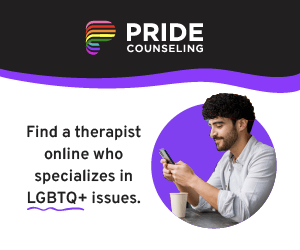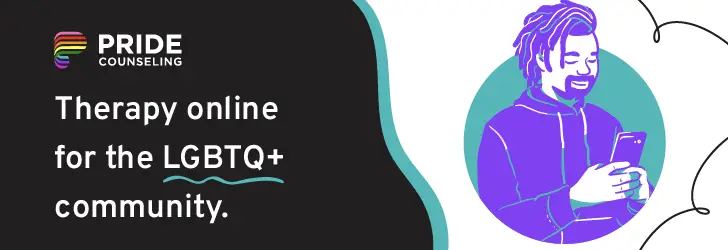As a BetterHelp affiliate, we receive compensation from BetterHelp if you purchase products or services through the links provided
Transgender acceptance in society is a topic with varying perspectives and opinions, as people’s views on this matter are often shaped by factors such as personal experiences, upbringing, or culture. With the rise in the number of U.S. adults who report knowing someone transgender, it is crucial to explore how these societal attitudes are shifting and what challenges the transgender community continues to face.
While recent surveys suggest that worldwide acceptance of the transgender community is slowly increasing, this progress is inconsistent across all regions or groups. A Pew Research Center study indicated significant divides by party lines in the United States regarding the impact of society accepting transgender people. In addition, about 38% of Americans believe society has gone too far in accepting transgender individuals. In comparison, 36% say not enough has been done regarding acceptance, indicating a lack of consensus on the issue.
Another important aspect of this discussion is the experiences and obstacles faced by transgender individuals themselves. Many continue to experience discrimination, a lack of acceptance, and other distressing factors, which can significantly impact their mental health and well-being. As the conversation about transgender acceptance continues to evolve, it is essential to analyze the progress made, the existing challenges, and the steps needed to foster a more inclusive and understanding society for all.
Acceptance of Transgender in Society

Changing Attitudes
Attitudes towards transgender individuals have gradually shifted in recent years, with increasing acceptance in many parts of society. An Ipsos survey found that people worldwide are becoming more accepting of the transgender community. However, there is still a considerable way to go as acceptance levels vary widely across different demographic groups and locations.
Social and Demographic Factors
Acceptance of transgender individuals is influenced by various social and demographic factors such as age, sex, ethnicity, and political affiliation. Younger generations tend to be more accepting of transgender people than older individuals, with the former showing more openness toward diverse gender identities.
When it comes to sex, women generally express a higher level of acceptance for transgender individuals than men, according to several surveys. People’s attitudes are also affected by their ethnicity, with certain ethnic groups showing more acceptance than others. This highlights the need for continued efforts in educating and promoting empathy among different ethnicities.
Political affiliation also plays a role in acceptance levels, as people with more liberal-leaning beliefs typically show greater support for trans rights than those with conservative views.
Accepting transgender people in society is an ongoing process, with progress being made across different aspects, such as changing attitudes and various social and demographic factors. However, more must be done to reduce discrimination further and ensure equal rights for all, regardless of gender identity.
Challenges Faced by the Transgender Community

Discrimination and Violence
The transgender community faces significant discrimination and violence in various aspects. This includes harassment, assault, and even murder. Trans people, especially those of color, are disproportionately targeted, which reflects a disturbing intersection of race and gender-based violence. In the United States, hate crime laws often fail to adequately protect transgender individuals, resulting in a lack of support and justice for victims.
Mental Health
As a result of discrimination, harassment, and societal stigma, transgender people often experience poorer mental health outcomes than their cisgender counterparts. They are at higher risk for depression, anxiety, and suicidal ideation. Access to appropriate mental health resources and support is crucial in addressing these disparities, but unfortunately, trans individuals frequently face barriers when seeking mental health care.
Housing and Employment
Transgender people often face housing and employment discrimination, making securing stable homes and jobs difficult. This affects their overall quality of life and exacerbates their vulnerability. Inclusive policies and anti-discrimination laws play a critical role in improving the situation for trans individuals, but progress toward this goal remains slow.
Access to Education and Healthcare
Transgender people may encounter numerous challenges when accessing education and healthcare. In educational settings, trans students may be subjected to bullying or harassment and may not receive support from teachers, administrators, or peers. This, in turn, impacts their academic achievements and well-being. Similarly, access to healthcare can be limited due to a lack of specialized medical care or discrimination by healthcare providers. The HRC Foundation found that 22% of trans people and 32% of trans people of color have no health insurance coverage, while 29% of trans adults have been refused health care due to gender identity. Comprehensive policies and cultural change are crucial in transforming educational institutions and healthcare facilities into more inclusive and welcoming environments for transgender individuals.

Legal and Support Framework
Identity Documents and Laws
Transgender individuals often face challenges obtaining identity documents reflecting their chosen gender. Different states have varying requirements, such as gender confirmation surgery, for individuals to update their documents. However, societal acceptance and increased understanding of transgender needs have pushed for more inclusive laws. In recent years, several states have made it easier for transgender individuals to update their birth certificates and other identity documents.
The Pew Research Center has conducted surveys highlighting the divide in public opinion on transgender issues. Although no consensus exists in the U.S. regarding society’s acceptance of transgender individuals, Democrats, especially young people, tend to be more supportive. A survey mentioned that 72% of Democrats younger than 30 believe a person can be a man or woman, regardless of the sex assigned at birth.
Support Groups and Organizations
Support for transgender individuals has emerged through various support groups and organizations. These entities cater to the different facets of the transgender experience, including healthcare, housing, social acceptance, and mental well-being. The World Professional Association for Transgender Health (WPATH) is a prominent organization focused on the medical aspect. They work towards developing guidelines and resources for healthcare professionals who treat disorders like Gender Dysphoria.
The American Psychological Association (APA) also has a role to play in supporting transgender people by providing guidelines for mental health professionals in treating gender dysphoria and related issues. They address unease with one’s body and help individuals feel more at ease in their preferred gender roles.
Support groups play a crucial role as well. They provide emotional, psychological, and practical support to transgender individuals and their families, helping them cope with the challenges associated with gender transition, societal acceptance, and other intersex conditions.
In conclusion, the legal and support framework for transgender individuals has seen growth and progress in recent years. However, much work must be done to create a more inclusive and understanding society for transgender and intersex individuals.
Aspects of Transgender Identity

Gender Identity and Expression
Transgender people have a gender identity that differs from the sex they were assigned at birth. They may express their gender in various ways, including clothing, hairstyles, and mannerisms. Genderqueer and nonbinary individuals challenge traditional concepts of gender and may identify as neither male nor female or as a combination of both. Society’s acceptance of transgender people is complex, with more people becoming aware of respecting others’ gender identities and expressions.
Medical Interventions
For some transgender individuals, medical interventions such as hormone therapy and surgeries are important in aligning their physical bodies with their gender identity. Hormone therapy helps to change the physical appearance of trans men and trans women in a way consistent with their gender identity. Trans men may undergo testosterone treatment, while trans women receive estrogen and antiandrogens. Surgical options can include gender-affirming surgeries like chest reconstruction or genital surgeries. It is important to understand that not all transgender people undergo medical treatments, and their identities are still valid.

Nonbinary and Other Gender Categories
Many societies recognize the existence of nonbinary and third-gender categories. Nonbinary people may identify as male and female, neither, or a different gender entirely. Third, gender refers to a category other than male and female that some cultures acknowledge. As society becomes more accepting, forms and documents are starting to accommodate these nonbinary and other gender categories. Gen Z, in particular, is a generation with a more inclusive perspective on gender identities, with 59% believing forms should offer options beyond “man” and “woman”.
FAQs
- How Garden Pods Create the Ultimate Stress-Free Retreat at Home - August 10, 2025
- How Cutting Your Grass Can Help You Manage Your Stress - June 17, 2025
- 6 Signs a Man Is Hurting in Silence — Even If He Looks Strong on the Outside - June 7, 2025
This site contains affiliate links to products. We will receive a commission for purchases made through these links.



